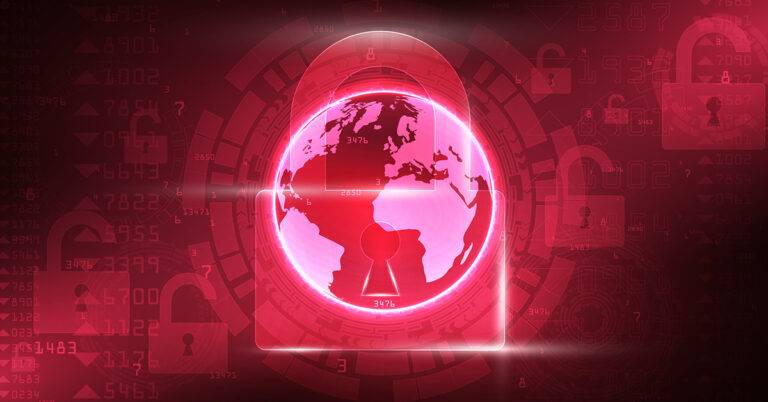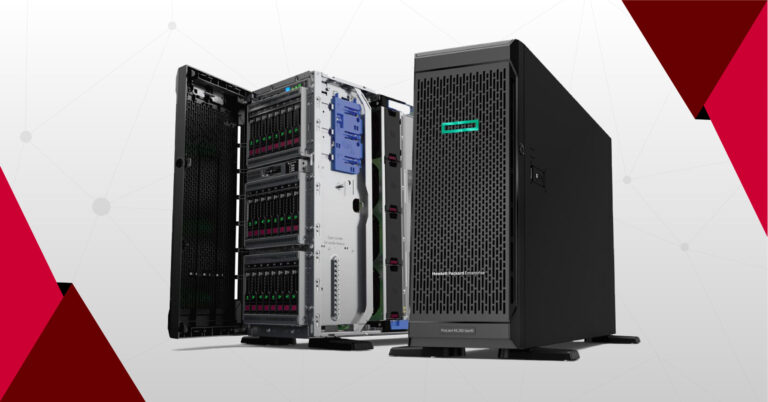The business landscape witnessed a rapid surge for cyber threats in 2023, elevating Cybersecurity to a paramount concern for regional and global organizations. As we approach 2024, the cybersecurity domain is seeing several emerging trends. Cybersecurity experts advocate that the focus of viable network protection begins with people, processes, and technology.1 Companies have an advantage over cybercriminals by existing in a data-rich environment, while cyber thieves live in a data-poor environment. Protecting that data-rich environment is paramount for network security. Too often, many organizations do not make network security a budget priority, placing themselves in a higher category of risk. Cybercriminals usually target vulnerable organizations to pick the low-hanging fruit. Businesses taking adequate protection identify themselves in a lower risk status. This article examines the 22 cybersecurity trends that demand attention from organizations in the approaching years. Organizations can stay ahead of the curve by being cognizant of these trends and fortifying their cybersecurity measures to safeguard business assets effectively.
#1 Exploitation of Remote Services
The landscape of cybersecurity in remote work environments continues to evolve dynamically. Remote workers are growing, with 12.7% of full-time employees working from home in 2023. Another 28.2% work remotely in a hybrid model.2 Organizations proactively fortify their digital perimeters, embrace advanced authentication methods, and implement robust encryption protocols to safeguard sensitive data. Vigilance against phishing attacks and social engineering schemes is paramount, necessitating continuous employee training programs. Optimizing Endpoint Security Solutions counter diverse threats across various devices. Furthermore, the stringent adherence to Compliance Standards and the integration of artificial intelligence in threat detection exemplify the commitment to ensuring a secure remote work environment. As the remote workforce expands, businesses remain dedicated to the highest cybersecurity standards, fostering trust and resilience in an ever-changing digital world.
#2 Cloud-Native Application Protection Platforms (CNAPP)
CNAPP is a security system that combines Cloud Security Posture Management (CSPM), Cloud Service Network Security (CSNS), and Cloud Workload Protection Platform (CWPP) in a single platform.3 Cloud environments transformed application development and security, enabling rapid development cycles and containerization for easy application movement. Cloud-native application protection platforms (CNAPP) integrate multiple capabilities to address the unique security needs of cloud applications. By incorporating multiple capabilities into a single solution and dashboard, CNAPP helps security teams monitor, manage, and secure their cloud-based applications effectively, fighting against security sprawl.
#3 Threat Exposure Management
Threat exposure management (TEM) is a risk-centric approach to strategic security planning. With the evolving cyber threat landscape and increasing regulatory requirements, organizations are adopting TEM to assess and manage their risk exposure proactively. By identifying potential threats to digital data and assessing the risk each poses, organizations can develop mitigation strategies and stay prepared to address new attack vectors.
#4 IoT Vulnerability
IoT vulnerability remains a critical concern for businesses worldwide. Cybersecurity experts are observing distinct trends in addressing these vulnerabilities. One notable trend is the implementation of advanced encryption protocols and multifactor authentication methods, ensuring secure communication between IoT devices and networks. Additionally, there is a growing emphasis on continuous monitoring and real-time threat detection, allowing organizations to swiftly identify and mitigate potential IoT security breaches. Moreover, companies are investing in employee IoT security training programs, enhancing awareness and minimizing human errors that could lead to vulnerabilities. Stay proactive in safeguarding your IoT infrastructure by staying abreast of these trends and implementing robust security measures.
#5 Hybrid Data Centers
Organizations are embracing hybrid data centers, integrating on-premises infrastructure with cloud-based resources amidst the surge in cloud computing. This strategic shift enhances scalability, empowering businesses to expand their on-premises data centers with cloud infrastructure on demand. This adaptability allows organizations to tailor their setups to specific infrastructure and security needs. They can host sensitive data and applications on-premises, capitalizing on cloud scalability. This synergy between on-premises and cloud resources optimizes operations, ensuring a dynamic and secure environment tailored to individual requirements.
#6 Machine Learning
Cybersecurity trends in Machine Learning (ML) are pivotal in shaping robust defense strategies against evolving threats. Companies are actively leveraging ML algorithms to enhance their security posture. One significant trend involves using ML-driven threat intelligence, enabling organizations to identify and predict potential cyber threats with unprecedented accuracy. Real-time analysis of vast datasets using ML models is another focus area, allowing rapid detection of anomalies and swift responses to security incidents. Moreover, businesses are integrating ML algorithms into security tools, enabling automated threat detection and response mechanisms. By embracing these ML-driven trends, organizations can proactively safeguard their digital assets and stay ahead of cyber adversaries in this ever-changing landscape.
#7 Artificial Intelligence (AI)
Artificial Intelligence (AI) introduces innovative strategies to combat cyber threats. One prominent trend involves AI-driven threat hunting, where machine learning algorithms actively seek out potential security breaches by analyzing patterns and anomalies in vast datasets. Additionally, AI-powered security orchestration and automation platforms are gaining traction, streamlining incident response, minimizing human intervention, increasing efficiency, and reducing response times. AI-based user behavior analytics enhance identity and access management, ensuring only authorized personnel can access sensitive information. Embracing these AI-driven trends empowers organizations to bolster their cybersecurity defenses, enabling proactive identification and mitigation of emerging threats while ensuring robust protection of digital assets. Stay ahead in the cybersecurity game by integrating these cutting-edge AI technologies into your security strategies.
#8 Mobile Cybersecurity
Mobile cybersecurity trends are pivotal in protecting sensitive data and digital assets in a mobile-driven world that is increasingly connected to smartphones and tablets. Connected devices are everywhere and often vulnerable to cyber attack and mobile banking malware. One noteworthy trend is the proliferation of mobile threat defense solutions, leveraging advanced machine learning algorithms to detect and thwart sophisticated mobile threats in real time. Organizations also focus on enhancing mobile application security by implementing robust encryption methods and secure coding practices, safeguarding apps against potential vulnerabilities.
Furthermore, there is a growing emphasis on secure networks through zero-trust security models for mobile devices, ensuring rigorous identity verification and continuous authentication to prevent unauthorized access. Employee training for mobile security threats focusing on phishing attacks and insecure Wi-Fi connections continues to gain prominence.
Integrating facial recognition and fingerprint scanning into mobile devices enhances user authentication and data security of private or company data on the phone. Stay proactive by embracing these mobile cybersecurity trends, enabling your organization to navigate the mobile landscape securely and protect sensitive information effectively.
#9 Security Consolidation
With the growing number of security tools organizations use, managing numerous point solutions can lead to alert fatigue, inefficient security architectures, and inconsistent policy enforcement. Organizations are focusing on security consolidation and integrated platforms to overcome these challenges. By integrating security solutions into a unified platform, organizations can improve visibility, increase efficiency and effectiveness in threat detection and response, and streamline their overall security architecture.
#10 Multifactor Authentication (MFA)
MTA continues to be a cornerstone of robust cybersecurity strategies, enhancing access security and thwarting unauthorized attempts effectively. One prominent trend involves integrating biometric authentication methods, such as facial recognition and fingerprint scanning, providing a seamless yet highly secure user experience. Organizations adopt adaptive authentication, which dynamically adjusts based on user behavior and risk factors, ensuring optimal security without compromising user convenience.
Additionally, using hardware tokens and smart cards for MFA is gaining traction, providing an extra layer of security beyond traditional password-based systems. Furthermore, there’s a focus on MFA solutions that leverage blockchain technology, enhancing the integrity and immutability of authentication processes.
Moreover, MFA-as-a-service solutions are becoming popular, allowing businesses to implement MFA seamlessly across various platforms and applications. Security education and awareness initiatives emphasize MFA’s importance, educating users about its benefits and encouraging widespread adoption.
By embracing these MFA trends, organizations can fortify their cybersecurity defenses, ensuring secure access to sensitive systems and data while effectively adapting to the evolving threat landscape. Stay ahead of potential security threats by integrating these innovative MFA solutions into your organization‚s authentication processes.
#11 Cyberespionage
Cybersecurity trends in the realm of cyberespionage demand vigilant attention and proactive measures. One notable trend involves the evolution of sophisticated Advanced Persistent Threats (APTs), characterized by highly targeted attacks on specific organizations or sectors. These attacks are growing in numbers and concern. The Center for Strategic & International Studies identified 16 separate cyber espionage attacks from India, Iran, Russia, and China just during September 2023.4 Cybersecurity experts will focus on threat intelligence and collaborative efforts to detect and mitigate these advanced attacks promptly.
There is a growing emphasis on supply chain security as cybercriminals increasingly target third-party vendors to infiltrate their intended victims. The adoption of Zero Trust security models is on the rise, ensuring that no user or system is inherently trusted, thereby minimizing the potential impact of insider threats related to cyberespionage.
By actively monitoring these trends and implementing comprehensive cybersecurity strategies, businesses can effectively thwart cyberespionage attempts, safeguarding sensitive data and intellectual property from malicious actors. Stay ahead of cyber threats by integrating these cutting-edge technologies and practices into your organization’s security framework.
#12 Malware Protection
Malware protection remains critical for organizations aiming to safeguard their digital assets and sensitive information. One prominent trend involves advancing Artificial Intelligence (AI) and Machine Learning (ML) algorithms in malware detection, enabling real-time analysis of complex code patterns and rapid identification of malicious software. This proactive approach ensures swift responses to evolving malware threats.
Additionally, there is a growing emphasis on integrating threat intelligence feeds, enabling organizations to stay updated with the latest malware variants and attack vectors. Collaborative efforts within the cybersecurity community and information sharing among organizations are becoming essential in combating emerging malware threats effectively.
Furthermore, the implementation of Endpoint Detection and Response (EDR) solutions is gaining traction, providing continuous monitoring and immediate response capabilities at the endpoint level. EDR solutions empower organizations to detect, investigate, and mitigate malware attacks efficiently.
Moreover, there’s a focus on user education and awareness programs to prevent social engineering attacks, often serving as entry points for malware infiltration. Regular security training equips employees with the knowledge to recognize phishing attempts and avoid inadvertently downloading malicious files.

#13 Distributed Denial-of-Service (DDoS) Attacks
AI-powered DDoS mitigation analyzes network traffic patterns, swiftly pinpointing malicious activities. There is a growing emphasis on leveraging cloud-based DDoS protection services, which offer scalability and robust traffic filtering capabilities. By distributing traffic across multiple servers and employing sophisticated filtering algorithms, these services effectively absorb and mitigate large-scale DDoS attacks.
Collaborative security efforts within the industry are also on the rise. Organizations share information and participate in DDoS threat intelligence networks, enabling collective defense against sophisticated attacks. This collaborative approach enhances the ability to anticipate and counteract DDoS threats effectively.
Additionally, organizations are investing in DDoS simulation and testing services to assess their preparedness against potential attacks. Regular simulations enable businesses to identify vulnerabilities in their DDoS mitigation strategies and refine their response protocols accordingly.
By actively monitoring and integrating these trends into their cybersecurity frameworks, businesses can fortify their defenses against DDoS attacks. Stay ahead of potential risks by adopting these innovative technologies and practices, ensuring uninterrupted online services, and bolstering your organization’s resilience against DDoS threats. These advanced systems empower organizations to respond promptly to evolving DDoS attack techniques, ensuring minimal disruption to online operations.
#14 Ransomware Protection
Defending against ransomware attacks is the biggest threat and remains a critical focus for organizations striving to protect their digital assets and maintain operational continuity. One significant trend involves integrating proactive measures, such as regular employee training programs, to enhance awareness about phishing techniques and social engineering schemes. Educated employees recognize suspicious activities, reducing the likelihood of falling victim to ransomware attacks.
Furthermore, there’s a growing emphasis on implementing robust backup and disaster recovery solutions. Organizations are investing in secure and redundant backup systems, often utilizing cloud-based services, to quickly restore critical data during a ransomware attack. Regularly updated backups enable businesses to restore their systems without succumbing to ransom demands.
Additionally, using AI-driven threat detection and response mechanisms is becoming prevalent. These advanced systems analyze network behaviors and identify real-time ransomware patterns, enabling swift containment and mitigation efforts. Machine learning algorithms enhance the accuracy of these detections, ensuring proactive defense against evolving ransomware threats.
Collaborative efforts within the cybersecurity community are also on the rise. Organizations are engaging in threat intelligence sharing networks, enabling the rapid dissemination of information about new ransomware variants and attack vectors. This collective approach strengthens the overall resilience against ransomware attacks.
By actively integrating these trends into their cybersecurity strategies, businesses can bolster their defenses against ransomware threats. Stay ahead of potential risks by adopting these innovative technologies and best practices, ensuring the protection of critical data and preserving business continuity in the face of ransomware attacks.
#15 Cloud Storage Security
Ensuring robust cloud storage security continues to be a paramount concern for businesses entrusting their data to cloud platforms. One notable trend involves the widespread adoption of zero-trust security models for cloud environments. Organizations are implementing strict access controls, continuous authentication, and encryption protocols to safeguard data stored in the cloud, regardless of user location or device.
Moreover, there’s a growing emphasis on integrating Cloud Access Security Brokers (CASBs). These sophisticated solutions provide real-time monitoring and control over data transferred between on-premises devices and the cloud, ensuring secure data sharing while enforcing compliance with organizational policies and industry regulations.
Additionally, the utilization of blockchain technology for cloud storage is gaining traction. By employing decentralized and immutable ledgers, businesses enhance the integrity and transparency of their cloud storage systems, ensuring data authenticity and tamper-proof records.
Furthermore, there’s a focus on implementing robust Identity and Access Management (IAM) solutions tailored for cloud environments. These solutions enable organizations to manage user identities, permissions, and credentials effectively, ensuring that only authorized personnel can access sensitive data stored in the cloud.
By adopting these cloud storage security trends, businesses can fortify their defenses against data breaches and unauthorized access. Stay ahead of potential risks by integrating these innovative technologies and best practices, ensuring the confidentiality, integrity, and availability of data stored in the cloud.
#16 Firewall as a Service (FWaaS)
FWaaS filters network traffic to safeguard organizations from internal and external threats. Market size for this service had a value of $1.8 billion in 2021 and projects growth to reach $15.6 billion by 2031.5 The landscape of cybersecurity trends for Firewall as a Service (FWaaS) is evolving to meet the dynamic challenges organizations face. One prominent direction involves the integration of advanced threat intelligence into FWaaS platforms. These intelligent firewalls leverage real-time data analysis to promptly identify and block emerging threats, enhancing businesses’ overall security posture.
The need for firewalls arises as corporate networks become more distributed and heterogeneous. Firewall architecture enables organizations to combine different types of firewalls into a centrally managed security architecture. This approach provides consistent security across distributed networks, ensuring that all connected infrastructure protects against potential threats.
There is a growing emphasis on the scalability and flexibility of FWaaS solutions. Organizations are adopting scalable firewall services that seamlessly adapt to fluctuating network demands. This flexibility ensures that businesses maintain optimal security levels regardless of network size or complexity.
Additionally, integrating Artificial Intelligence (AI) and Machine Learning (ML) algorithms into FWaaS platforms is becoming prevalent. These smart-systems analyze network traffic patterns and user behavior in real-time, allowing for the swift detection of anomalies and potential security breaches. AI-driven FWaaS solutions enable proactive threat mitigation, strengthening defenses against sophisticated cyber attacks.
Furthermore, there is an increased focus on user-friendly interfaces and intuitive management consoles. Streamlined dashboards and simplified configuration processes empower IT teams to efficiently manage firewall policies and monitor network activities, enhancing operational efficiency and reducing response times.
By adopting these FWaaS trends, businesses can fortify their network security, ensuring comprehensive protection against cyber threats. Stay ahead of potential risks by integrating these innovative technologies and best practices, enabling robust firewall protection and safeguarding critical business data and assets.
#17 Extended Detection and Response (XDR)
XDR continues to be a pivotal cybersecurity trend, revolutionizing threat detection and response strategies for organizations. One significant trend involves the integration of XDR platforms with advanced Artificial Intelligence (AI) and Machine Learning (ML) algorithms. These intelligent systems analyze vast datasets in real time, proactively identifying complex threats and allowing security teams to respond swiftly and effectively.
Moreover, there is a growing emphasis on XDR solutions that offer seamless integration with various security tools and technologies. This interoperability ensures holistic visibility across diverse IT environments, enabling comprehensive threat detection and streamlined incident response workflows. Businesses are investing in XDR platforms that aggregate and correlate data from endpoints, networks, and cloud services, providing a unified security view.
Additionally, XDR platforms are evolving to include automated response capabilities. Intelligent automation powered by AI algorithms enables real-time threat containment, minimizing the impact of security incidents. Security teams can focus on strategic threat analysis and mitigation efforts by automating repetitive tasks. Automated security systems offering automatic threat detection to protect against data breaches of financial transactions, stolen data, political and industrial secrets, and other security tools will continue developing.
Furthermore, there’s a focus on enhancing user experience through intuitive XDR interfaces and customizable dashboards. User-friendly interfaces empower security professionals to quickly assess threat alerts, investigate incidents, and make informed decisions, thereby improving operational efficiency and reducing response times.
By adopting these XDR trends, organizations can elevate their cybersecurity posture, ensuring rapid detection, containment, and mitigation of cyber threats. Stay ahead of potential risks by integrating these innovative technologies and best practices, enabling a proactive and robust response to the ever-evolving threat landscape.
#18 Third-Party Supply Chain Risk Management (SCRM)
SCRM deals with risks associated with the supply chain for businesses and manufacturers. A company can take extensive protective measures only to be compromised by a third party in their supply chain that they have little control over. Organizations can be at risk from their suppliers and their products or services. It is one of the most challenging cybersecurity risks to solve.6 Third-Party Supply Chain Risk Management (SCRM) continues to be a critical focus for organizations aiming to protect their operations from potential vulnerabilities in their extended supply networks. One notable trend involves the adoption of comprehensive risk assessment frameworks for third-party vendors. These frameworks evaluate potential risks associated with vendors and suppliers, enabling organizations to make informed decisions on partnerships and monitor ongoing relationships.
Moreover, there is an increased emphasis on cybersecurity auditing and compliance verification for third-party partners. Businesses are implementing strict security standards and requiring third-party vendors to meet compliance regulations, fostering a secure and compliant supply chain ecosystem.
Adopting cutting-edge technologies like blockchain and secure data-sharing platforms is becoming widespread. These innovations improve transparency and traceability in the supply chain, mitigating the risk of data breaches or unauthorized access by malicious actors.
Furthermore, there’s a focus on developing incident response plans specifically tailored to supply chain security. These plans ensure rapid and coordinated responses to security breaches, minimizing the impact on critical operations and data.
Organizations can fortify their extended supply chains by actively adopting these Third-Party Supply Chain Risk Management trends, mitigating potential risks and vulnerabilities. Stay ahead of potential supply chain risks by integrating these innovative technologies and best practices, ensuring the resilience and security of your organization’s operations.
#19 Secure Access Service Edge (SASE)
SASE is a network architecture providing SD-WAN and cloud-native security functions such as secure web gateways, cloud access security brokers, firewall-as-a-service, and zero-trust network access.7 These cloud-delivered services continue redefining the cybersecurity landscape, offering a comprehensive and agile approach to network security. One prominent trend involves the integration of Artificial Intelligence (AI) and Machine Learning (ML) algorithms into SASE platforms. These intelligent systems analyze network traffic patterns in real time, enabling proactive threat detection and rapid response to evolving security threats.
Moreover, there is a growing emphasis on the convergence of networking and security functions within SASE architectures. Organizations are adopting unified platforms that seamlessly integrate network capabilities like SD-WAN (Software-Defined Wide Area Networking) with advanced security features, simplifying management and ensuring consistent protection across all network endpoints.
Additionally, the adoption of Zero Trust principles within SASE is gaining traction. Zero Trust frameworks ensure strict access controls and continuous verification, enhancing security by default. SASE platforms are incorporating Zero Trust security models, enabling organizations to implement least-privileged access policies and reducing the attack surface.
Furthermore, there’s a focus on enhancing user experience through intuitive interfaces and streamlined deployment processes. User-friendly dashboards and simplified configuration options empower IT professionals to manage SASE solutions efficiently, ensuring smooth implementation and minimizing operational complexities.
By actively embracing these SASE trends, organizations can elevate their cybersecurity posture, enabling secure and efficient network access for employees, partners, and customers. Stay ahead of potential security risks by integrating these innovative technologies and best practices, fostering a proactive and robust approach to network security in the ever-evolving digital landscape.

#20 Website and Domain Spoofing
Countering website and domain spoofing remains a critical focus for organizations aiming to protect their online presence and brand reputation. Counterfeit websites attempt to lure existing customers from top brands like Adobe, Amazon, Apple, Bank of America, Facebook, Google, Netflix, PayPal, Wells Fargo and many more.8 & 9 One significant trend involves the implementation of advanced Domain-based Message Authentication, Reporting, and Conformance (DMARC) protocols. These protocols enable organizations to authenticate their email communications, ensuring that recipients can verify the sender’s legitimacy and reducing the risk of phishing attacks from domain spoofing.
A growing emphasis is on deploying AI-driven threat intelligence solutions to detect patterns associated with spoofed websites or domains. These systems allow organizations to proactively block malicious entities and prevent unauthorized use of their brand names.
Companies use Secure Sockets Layer (SSL) certificates and Transport Layer Security (TLS) protocols. These certificates and protocols establish encrypted connections between users and websites. Encrypted communication mitigates the risk of man-in-the-middle attacks and ensures the confidentiality and integrity of data exchanged between users and web servers.
Businesses are educating customers, employees, and stakeholders about the signs of website and domain spoofing, enabling them to recognize phishing attempts and suspicious websites. Knowledgeable users act as an additional layer of defense against spoofing attacks.
By actively integrating these website and domain spoofing trends, organizations can bolster their defenses, ensuring the authenticity and integrity of their online presence. Stay ahead of potential risks by adopting these innovative technologies and best practices, safeguarding your brand, and building trust with your online audience.
#21 MITRE ATT&CK Framework
MITRE ATT&CK is a knowledge base of cybercriminal tactics and techniques accessible to the private sector, government, and the IT product and service community. The MITRE ATT&CK framework provides organizations with valuable insights to enhance their defense strategies against sophisticated cyber threats.10 One significant trend involves the proactive adoption of MITRE ATT&CK techniques for threat hunting and detection. Security teams leverage the framework’s extensive knowledge base to identify and mitigate potential threats by mapping adversaries’ tactics, techniques, and procedures (TTPs) to their security postures.
There is a growing emphasis on integrating MITRE ATT&CK into security operations and incident response workflows. Organizations are aligning their incident response plans with the framework, enabling rapid and effective responses to cyber incidents based on known adversary behaviors. This integration streamlines incident analysis, allowing security teams to promptly identify attack patterns and vulnerabilities.
Additionally, the utilization of MITRE ATT&CK for red and purple teaming exercises is becoming prevalent. By simulating real-world attack scenarios based on ATT&CK techniques, organizations can evaluate the effectiveness of their security controls and incident response capabilities. These exercises provide actionable insights for strengthening security measures and resilience against cyber threats.
Furthermore, there’s a focus on continuous training and skill development for security professionals related to the MITRE ATT&CK framework. Training programs and certifications enable cybersecurity teams to stay updated with the latest threat intelligence, ensuring they can effectively leverage the framework to bolster their defenses.
By actively incorporating these MITRE ATT&CK framework trends, organizations can elevate their cybersecurity capabilities, enabling proactive threat detection, effective incident response, and continuous improvement of their security postures. Stay ahead of potential risks by integrating these innovative approaches into your security strategies, ensuring robust protection against evolving cyber threats.
#22 Data Exfiltration
Safeguarding against data exfiltration remains a top priority for organizations seeking to protect sensitive information from unauthorized access and theft. One significant trend involves the deployment of advanced Data Loss Prevention (DLP) solutions. These sophisticated tools employ machine learning algorithms to monitor data transfers, identify unusual patterns, and promptly block or alert potential data exfiltration attempts, enhancing proactive threat mitigation.
Moreover, there is a growing emphasis on Zero Trust Network Access (ZTNA) frameworks. Organizations ensure that only authenticated and authorized users can access specific data by implementing strict access controls and continuous verification protocols. ZTNA models significantly reduce the risk of insider threats and external attacks targeting sensitive information.
Adopting Encryption as a Service (EaaS) solutions is also becoming prevalent. These services enable end-to-end data encryption at rest and in transit, ensuring that even intercepted data remains indecipherable to unauthorized users. Encryption plays a pivotal role in protecting sensitive data from exfiltration attempts.
Furthermore, there’s a focus on comprehensive employee training programs. By educating staff about phishing techniques, social engineering schemes, and secure data handling practices, organizations empower their workforce to recognize potential threats and prevent inadvertent data leaks.
By actively embracing these data exfiltration trends, organizations can fortify their defenses, ensuring the confidentiality and integrity of their sensitive data. Stay ahead of potential risks by integrating these innovative technologies and best practices, fostering a proactive and robust approach to protecting valuable business information.
Summary
In light of these emerging trends, organizations need robust cybersecurity solutions to protect against evolving cyber threats. Integrated cybersecurity through Les Olson IT helps organizations address new attack vectors, enhance security efficiency, and manage risk effectively. Organizations can bolster their cybersecurity posture, data protection, infrastructure security, and protect critical assets in an increasingly digital and interconnected world. Les Olson IT serves all of Utah and Las Vegas, helping organizations maintain network security. 
Other Resources
- Types of Cyber Attacks E-book – discusses the types of attacks and how to prevent them.
- LOC Security Suite – provides 3 comprehensive cybersecurity solutions for endpoint management.
- Remote Access Bundle – available with a Les Olson IT service plan.
- Employee Cybersecurity Training – free personalized presentation for Les Olson IT to your employees.
- Sophos Endpoint Security – stops the widest range of attacks with a unique combination of deep learning malware detection, exploit prevention, anti-ransomware, and more.
Footnotes
- 1 Perri, Lori. “Top Cybersecurity Trends in 2023.” Gartner. April 19, 2023. Accessed 12 Oct. 2023. www.gartner.com/en/articles/top-strategic-cybersecurity-trends-for-2023
- 2 Haan, Kathy. “Remote Work Statistics And Trends In 2023.” Forbes. June 12, 2023. Accessed 11 Oct. 2023. www.forbes.com/advisor/business/remote-work-statistics/
- 3“What is a CNAPP?” Microsoft. Accessed 12 Oct. 2023. www.microsoft.com/en-us/security/business/security-101/what-is-cnapp
- 4Significant Cyber Incidents. Center for Strategic & International Studies (CSIS). Accessed 12 Oct. 2023. www.csis.org/programs/strategic-technologies-program/significant-cyber-incidents
- 5Md, K. Keshav, K. and Vineet, K. “Firewall-as-a-Service Market Research, 2031.” Allied Market Research. September, 2022. Accessed 11 Oct. 2023. www.alliedmarketresearch.com/firewall-as-a-service-market-A07978
- 6“Cybersecurity Supply Chain Risk Management Guide – GSA.” U.S. General Services Administration. August, 2022. Accessed 12 Oct. 2023. www.gsa.gov/system/files/C-SCRM_Guide_v2_August_2022.pdf
- 7“What Is Secure Access Service Edge (SASE)?” CISCO. Accessed 12 Oct. 2023. www.cisco.com/c/en/us/products/security/what-is-sase-secure-access-service-edge.html
- 8“2023 Update – How Are the Most-Spoofed Brands Represented in the DNS?” Circleid. April 14, 2023. Accessed 11 Oct. 2023. circleid.com/posts/20230414-2023-update-how-are-the-most-spoofed-brands-represented-in-the-dns
- 9“10 Spoofing Facts & Brand Impersonation Facts That Will Shock You.” Graphus. April 8, 2022. Accessed 11 Oct. 2023. www.graphus.ai/blog/10-spoofing-facts-brand-impersonation-facts-that-will-shock-you/
- 10ATT&CK. Mitre. Accessed 12 Oct. 2023. attack.mitre.org/




